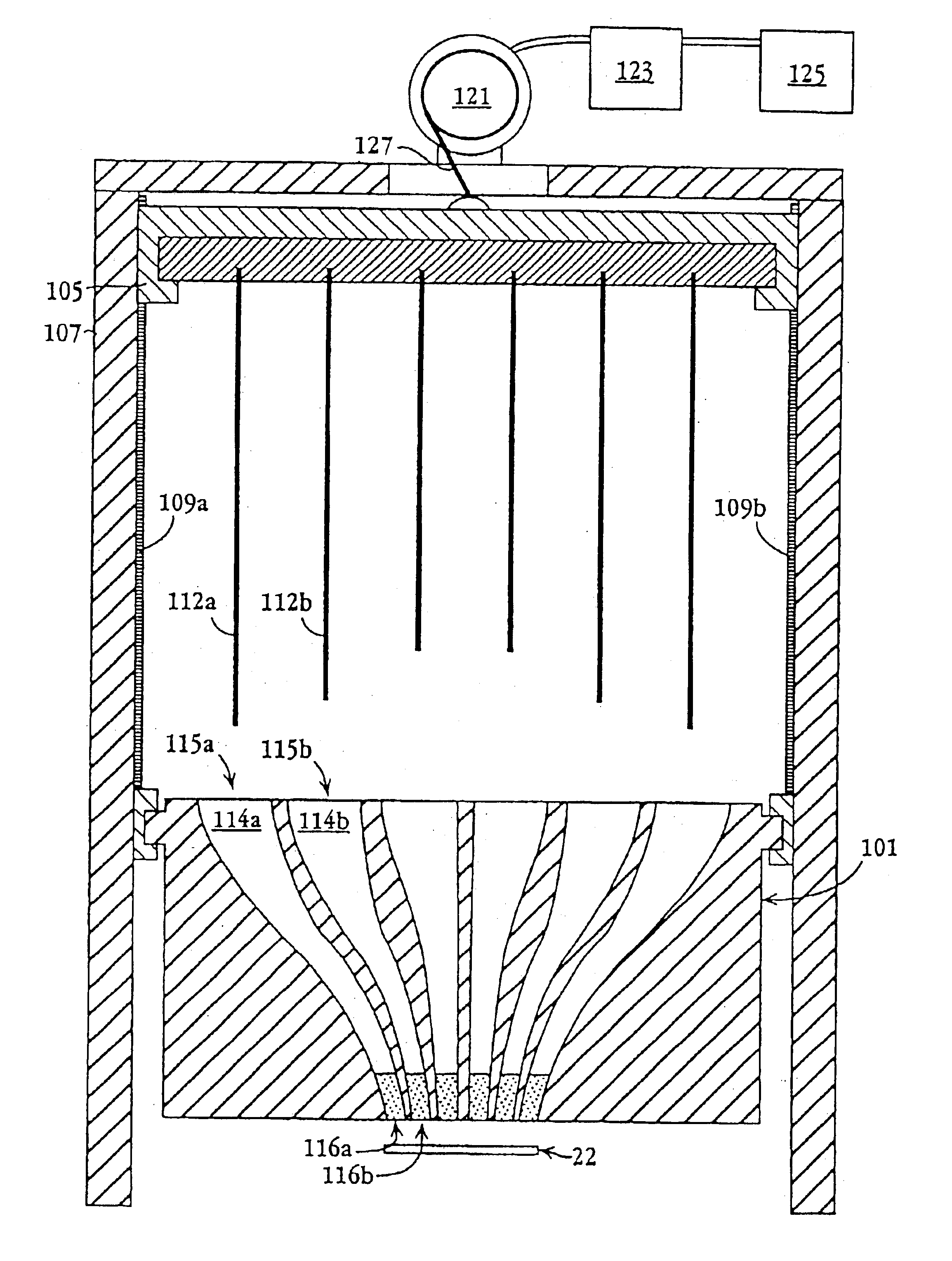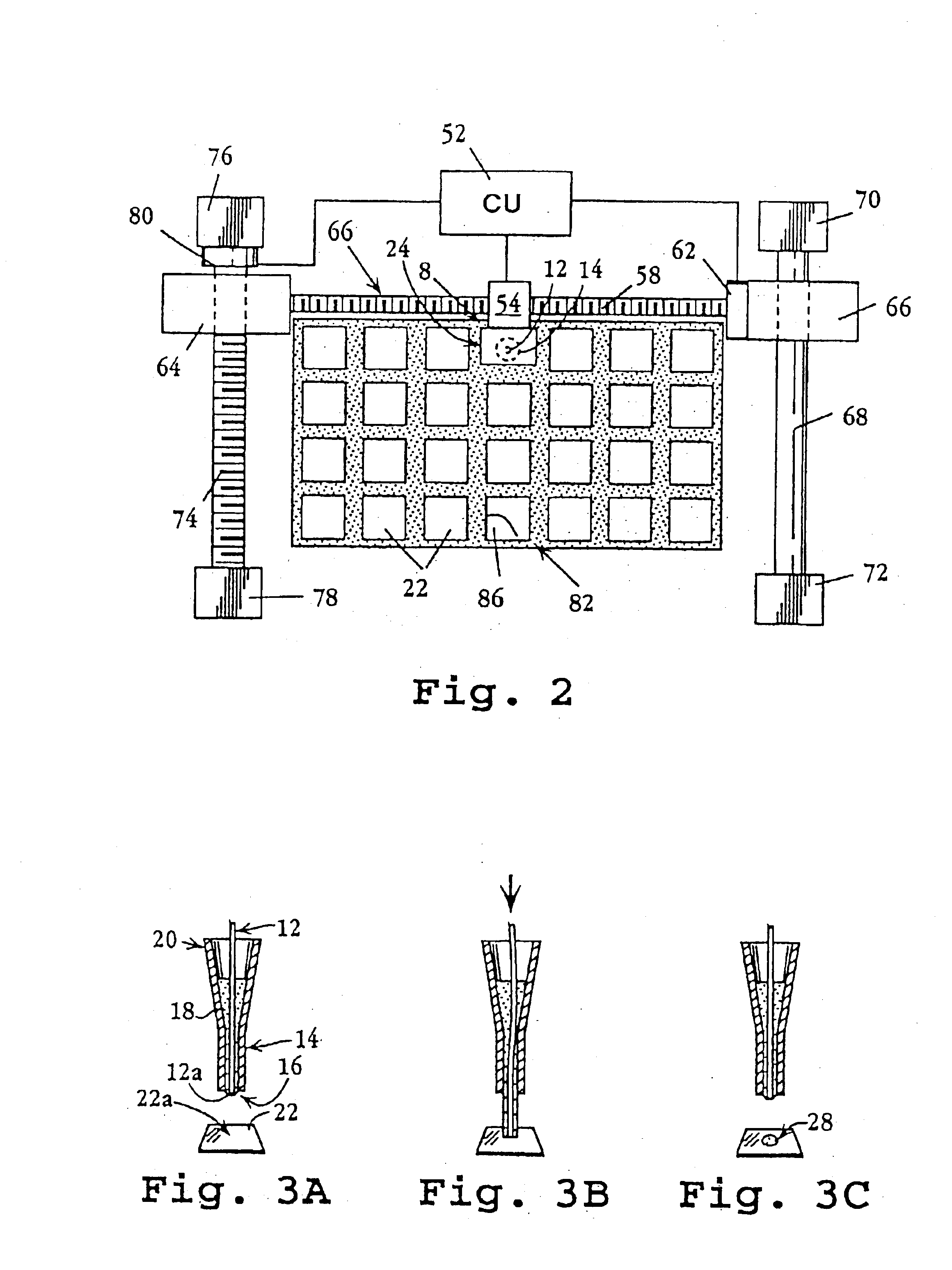Apparatus and method for spotting a substrate
a technology of substrate and apparatus, applied in the field of liquid dispensing, can solve the problems of inability to accurately dispense extremely small volumes of liquid, differences in resulting signal intensity or overlap of spots, and inability to approach samples containing relatively fragile macromolecules
- Summary
- Abstract
- Description
- Claims
- Application Information
AI Technical Summary
Benefits of technology
Problems solved by technology
Method used
Image
Examples
Embodiment Construction
The following discussion of the preferred embodiments of the present invention is merely exemplary in nature. Accordingly, this discussion is in no way intended to limit the scope of the invention.
One aspect of the invention provides a device for dispensing a small volume of a liquid reagent on a substrate. Generally, the device includes a tube adapted to contain the liquid. An elongate fiber is disposed within the tube for axial movement therein between raised and lowered positions. Upon shifting or oscillating the fiber between its raised and lowered positions, a liquid spot can be formed at a selected position on the substrate.
In one exemplary arrangement of a spotting device, denoted generally as 8 in FIG. 1, a fiber, indicated as 12, extends longitudinally within a tube, denoted as 14, having an orifice 16 at its lower end. Tube 14 is adapted to contain a liquid reagent, such as 18, for controlled deposition on a substrate, as discussed more fully below. Tube 14 can be formed, ...
PUM
| Property | Measurement | Unit |
|---|---|---|
| diameter | aaaaa | aaaaa |
| diameter | aaaaa | aaaaa |
| diameter | aaaaa | aaaaa |
Abstract
Description
Claims
Application Information
 Login to View More
Login to View More - R&D
- Intellectual Property
- Life Sciences
- Materials
- Tech Scout
- Unparalleled Data Quality
- Higher Quality Content
- 60% Fewer Hallucinations
Browse by: Latest US Patents, China's latest patents, Technical Efficacy Thesaurus, Application Domain, Technology Topic, Popular Technical Reports.
© 2025 PatSnap. All rights reserved.Legal|Privacy policy|Modern Slavery Act Transparency Statement|Sitemap|About US| Contact US: help@patsnap.com



